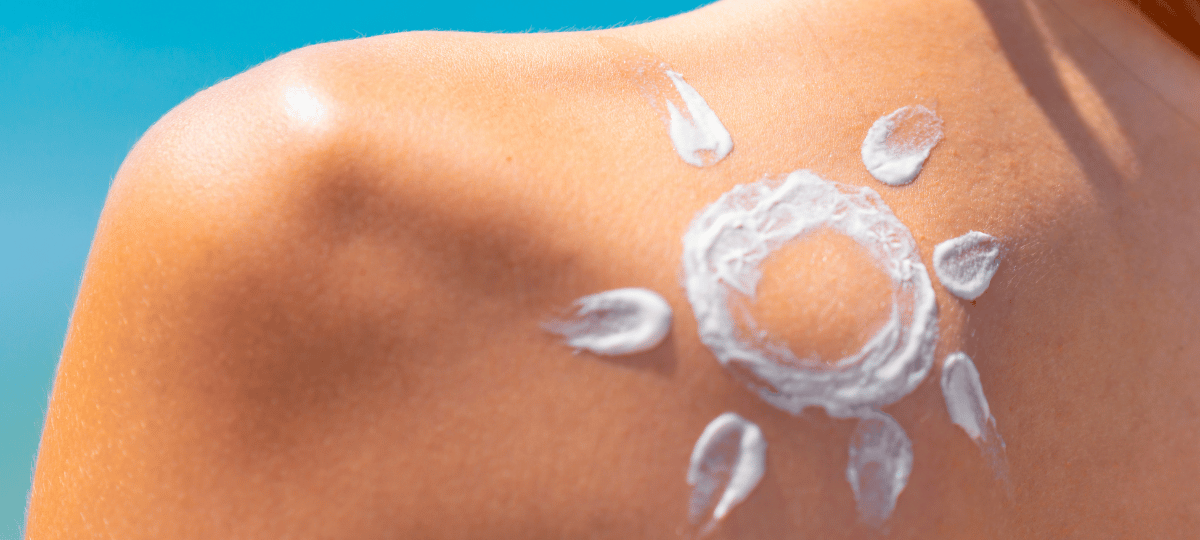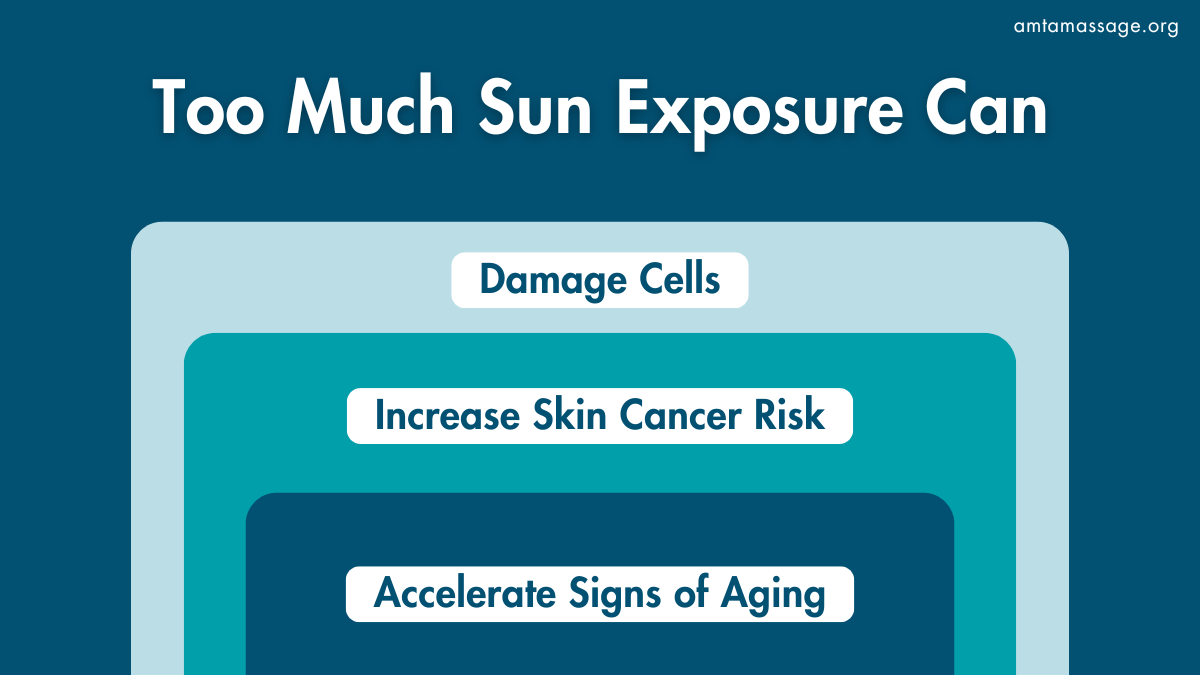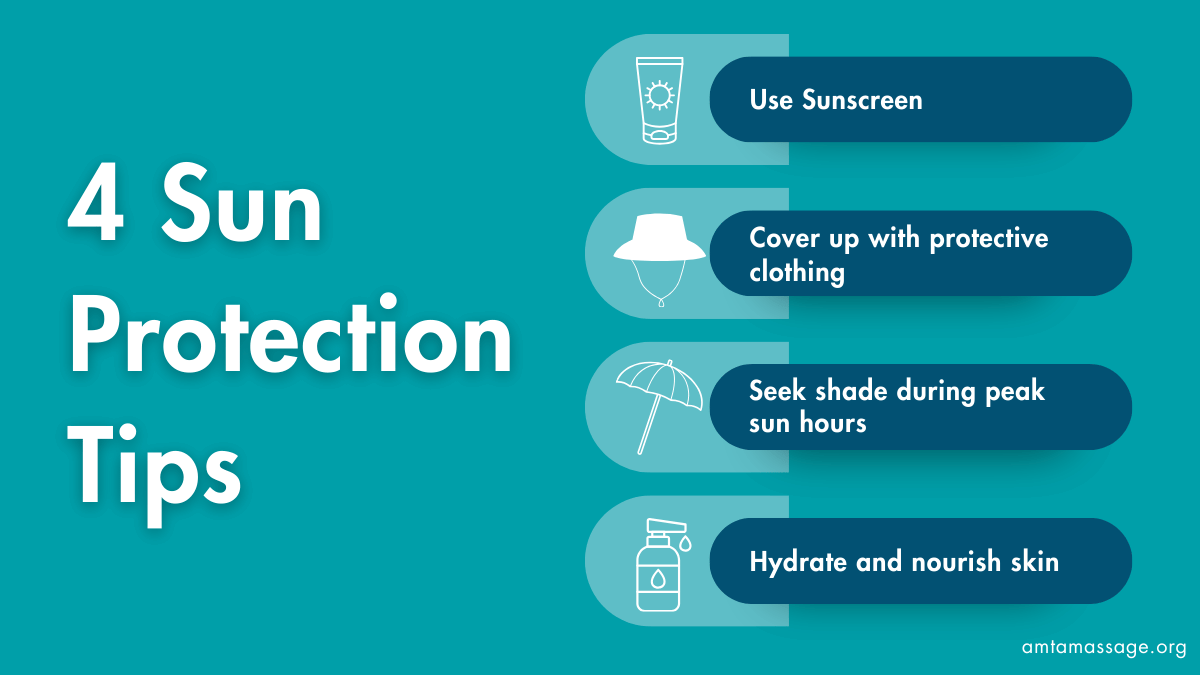Massage Therapy Journal
Skin Deep
From eczema to acne, chronic skin conditions demand caution and care from massage therapists.
These few smart sun habits will help you keep your skin healthy and protected all summer long.
May 1, 2025

Summer is right around the corner, meaning sunny days perfect for hiking, swimming and soaking up the great outdoors are almost, here, too.
While the sunshine feels wonderful, too much exposure can take a serious toll on your skin, leading to sunburn, premature aging and even skin cancer.
The good news? You can still enjoy the sun safely with a few smart habits. Here’s everything you need to know to keep your skin healthy and protected all summer long.
Sun exposure is the leading cause of skin cancer, the most common form of cancer in the U.S.
According to the Skin Cancer Foundation, one in five Americans will develop skin cancer by the age of 70, and having five or more sunburns doubles your risk of melanoma. UV rays from the sun are a proven human carcinogen, damaging cells and increasing the risk of skin cancer.
In addition to health risks, too much sun exposure accelerates signs of aging, causing wrinkles, fine lines and sunspots.

Sunscreen is your first line of defense against harmful UV rays. Here’s a few tips on how to choose a good sunscreen, as well as some general guidelines around application:
Clothing offers an extra layer of sun protection. Consider these sun- smart tips:
The sun is strongest between 10 a.m. and 4 p.m. If possible, plan outdoor activities for the early morning or late afternoon.
If you must be outside, find shade under trees, umbrellas or pop-up tents to reduce direct sun exposure.
The summer heat can dehydrate your skin, making it more susceptible to damage. Keep your skin healthy by:

Early detection is key to successful treatment. Regularly check your skin for any changes, such as:
Protecting your skin doesn’t mean avoiding the sun altogether. It’s all about balance. By using sunscreen, wearing protective clothing, staying hydrated and being mindful of sun exposure, you can enjoy the beautiful summer weather while keeping your skin safe and healthy.
So go ahead, plan that beach trip, hike that scenic trail and enjoy the sunshine!
Just be sure to take care of your skin along the way.
As a massage therapist, you are in a unique position to see parts of your clients’ bodies that are not easily visible to them, like their back, for example. For clients you see regularly, you might also be one of the first to notice if a mole changes shape or color, or a new spot appears.
AMTA has two resources that can keep you updated on how skin cancer occurs, what to look for in your clients and how to talk to them if you notice something suspicious:
“Only 20 percent of individuals look at their backs to screen for skin cancer on a yearly basis,” Dr. Friedrichs says. “Many aren’t ever examined by a physician. You have the unique opportunity to view these areas and help detect skin cancers at their earliest stages, and early detection saves lives.”
______________________________
Share Your Feedback on Massage Therapy Journal
Take our quick survey to share your insights and help us enhance our publication!